Amphibians & Reptiles
Amphibians
Amphibians have smooth and moist skin with many glands. They breathe using gills, lungs, through their skin and throat, separately or together. Their eggs have a jelly-like covering, but no shell. Six species of salamanders and newts, and five species of toads and frogs may be found in the Dungeness watershed.
Salamanders
Salamanders live their early lives in water and their adulthood on land. Others, such as lungless salamanders, live only on land. Newts start out in the water, then spend several years on land before returning to the water for their adulthood.
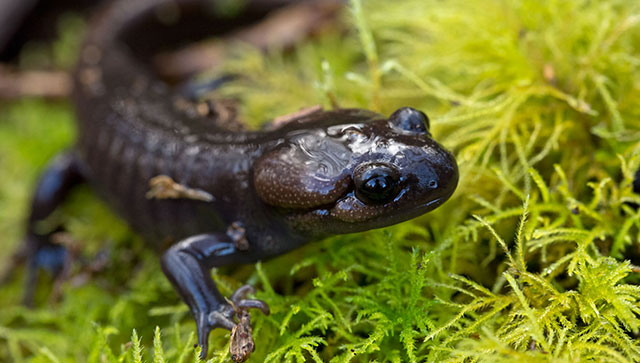
Northwestern Salamander
Scientific name: Ambystoma gracile (Baird).
Large, heavy bodies with prominent rib grooves, brown, smooth and moist skin with light-colored granular areas behind the eyes, along sides and along top of tail. Adults grow up to 9.75 inches.
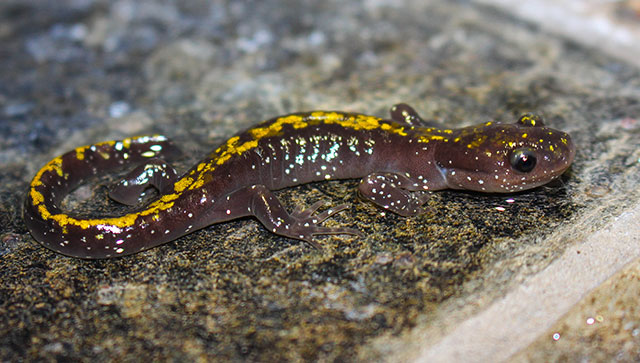
Long-Toed Salamander
Scientific name: Ambystoma marcodactylum (Baird).
Common locally. Exceptionally long fourth toe of the hind foot. Prominent rib grooves, black or brown skin with greenish yellow or yellow stripe on back, grows up to 6.25 inches.
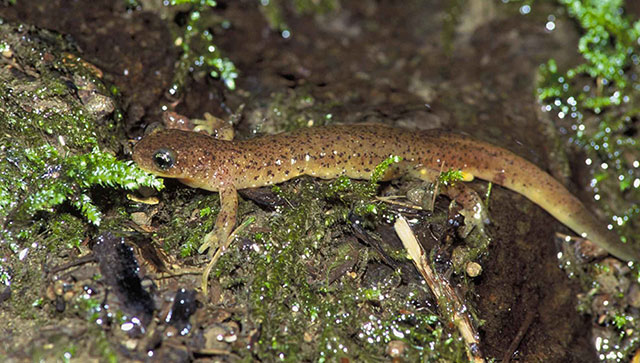
Olympic Torrent Salamander
Scientific name: Rhyacotriton olympicus (Gaige).
Back and sides green or gray without dark spots, bright yellow belly with large dark blotches or spots, distinct wavy edges. Grows up to 4 inches.
Found only on the Olympic Peninsula.
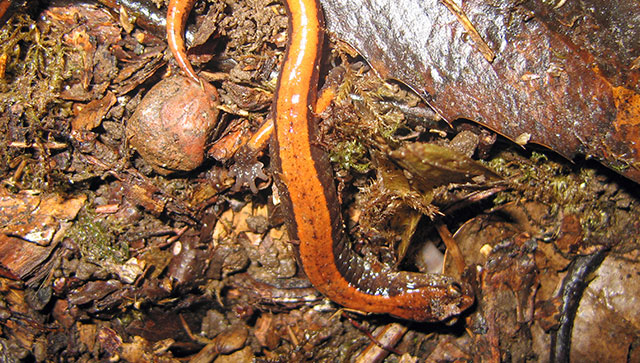
Western Red-Backed Salamander
Scientific name: Plethodon vehiculum (Cooper).
Small, slender woodland salamander with stripe extending to tip of tail, sides black to gray with gray belly and white speckling. Grows up to 4 inches long.
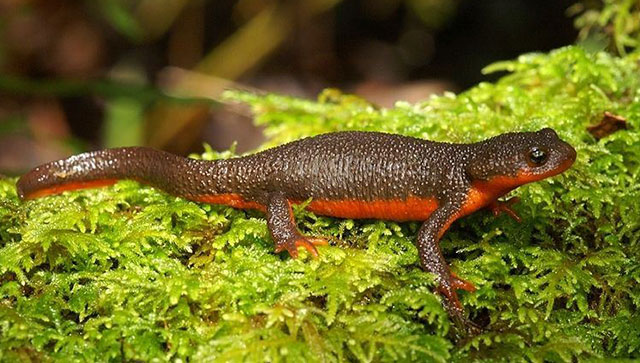
Rough-Skinned Newt
Scientific name: Taricha granulosa (Skilton).
Common in lowlands, uncommon higher elevations. Our only dry-skinned newt. No rib grooves, skin is reddish brown above and bright orange below. Grows up to 8 inches long
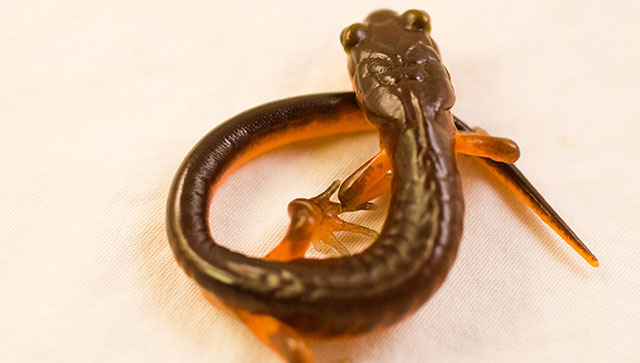
Ensatina
Scientific name: Ensatina eschscholtzii (Gray).
Common in many local habitats. Stout bodied, twelve grooves along ribs, reddish brown or tan, grows up to 4.25 inches.
Frogs & Toads
Although some traits are blurred, “toads” typically have warty, dry skin and short hind legs, whereas “frogs” have smooth, moist skin and longer hind legs. Frogs are considered more aquatic than toads, but not always.
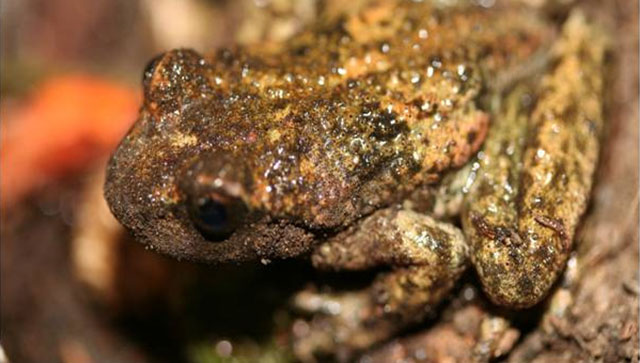
Tailed Frog
Scientific Name: Ascaphus truei
Found in the small, fast-moving cold and rocky streams of Olympics. Reddish brown or gray, prominent “tail” in males.
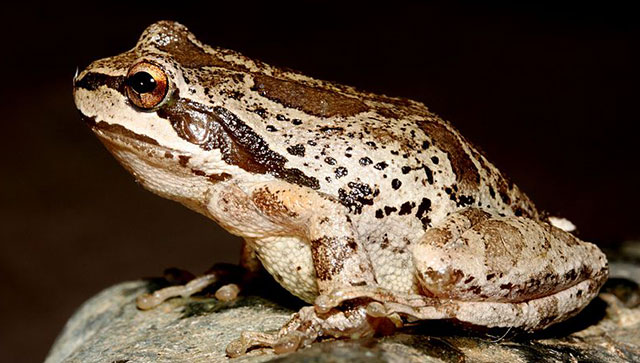
Cascades Frog
Scientific Name: Rana cascadae
Common in subalpine and forested swamps by streams. Tan, copper, or olive green with prominent black spots.
Females to 3”, males to 2.25”.
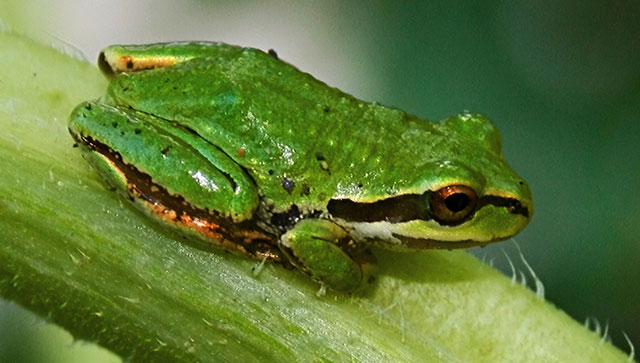
Pacific Tree Frog
Scientific Name: Pseudacris regilla (Hyla regilla)
Common and very vocal in many habitats. No other frog in our area has toes tipped with round toe pads. Grows up to 2”.
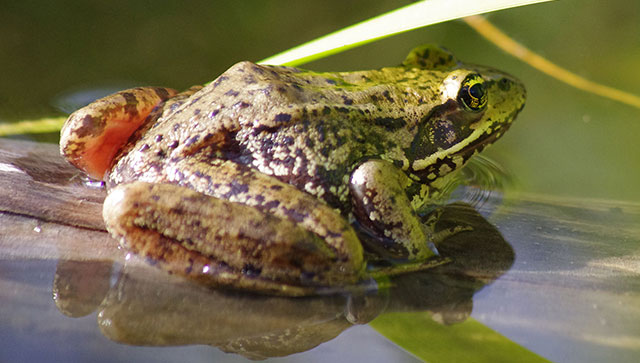
Red-Legged Frog
Scientific Name: Rana aurora.
Common in the lowlands. Brown or reddish brown with small black flecks and spots. Ventral sides of hind legs are red. Females to 4”, males to 2.75”.
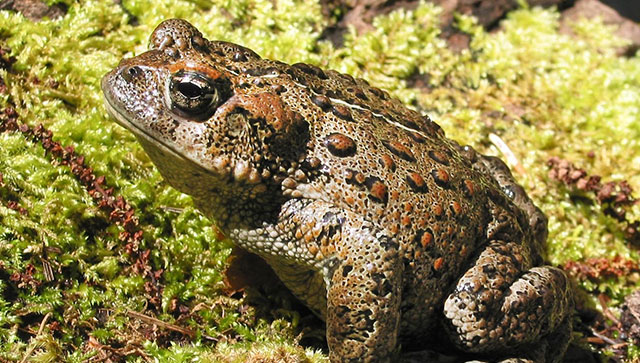
Western Toad
Scientific Name: Bufo boreas
Common in our area. Large, females to 5”, males to 4”, dry warty skin with conspicuous glands behind the eyes, varying color.
Reptiles
Body covered by horny epidermal scales; respiration by lungs; amniotic eggs covered with leathery shells. The reptiles in our area consist of only lizards and snakes. If you see a wild turtle on the Olympic Peninsula, please let us know.
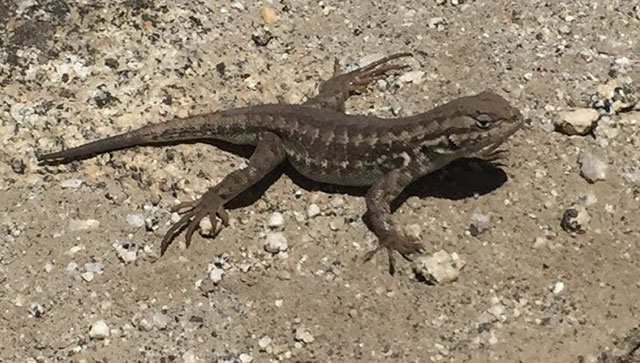
Northern Alligator Lizard
Scientific Name: Elgaria coerulea (Wiegmann).
Uncommon in lowland forests. A brown to dark brown or greenish brown lizard with a longitudinal fold on each side of the body. Brown eyes, up to 10 inches in length.
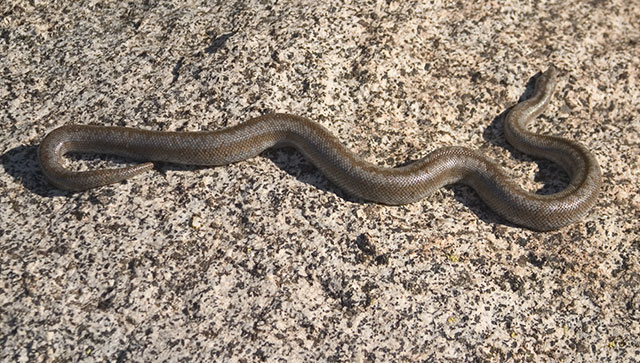
Rubber Boa
Scientific Name: Charina bottae (Blainville).
Uncommon to rare in the Olympic coniferous forests. Distinct rubbery feel and appearance. Uniform in color, varying from olive green to brown, juveniles may be tan or pink. Usually less than 2 feet, maximum length of 33 inches.
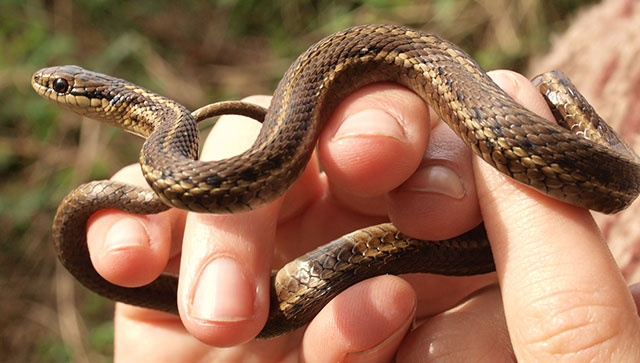
Northwester Garter Snake
Scientific Name: Thamnophis ordinoides.
These snakes have the most variable scales and color of any garter snake. They usually have 7 upper scales per side and 8 lower scales per side of the mouth. A well-defined vertebral stripe is usually present, but may be faint, broken or absent. Its color may be red, orange, yellow, white or blue. They are relatively small garter snakes, usually less than 2 feet. Head size is small.
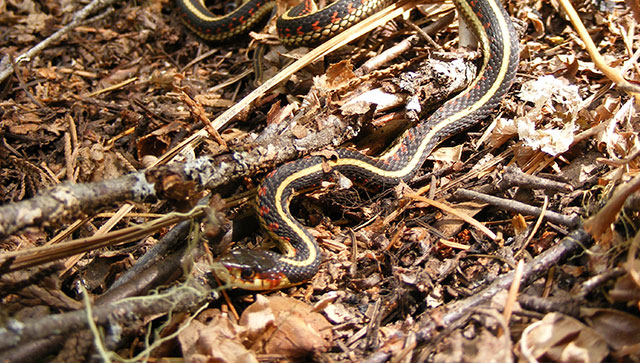
Common Garter Snake
Scientific Name: Thamnophis sirtalis.
Common in local habitats. Scales are important to identify this snake. They usually have 7 upper scales and 10 lower scales per side of their mouths. Coloration and pattern vary. Grow up to 52 inches in length.

